This post may contain affiliate links. Please read our disclosure policy.
How to make delicious, soft homemade cream cheese using a super-simple method and 3 ingredients you probably already have in your kitchen.
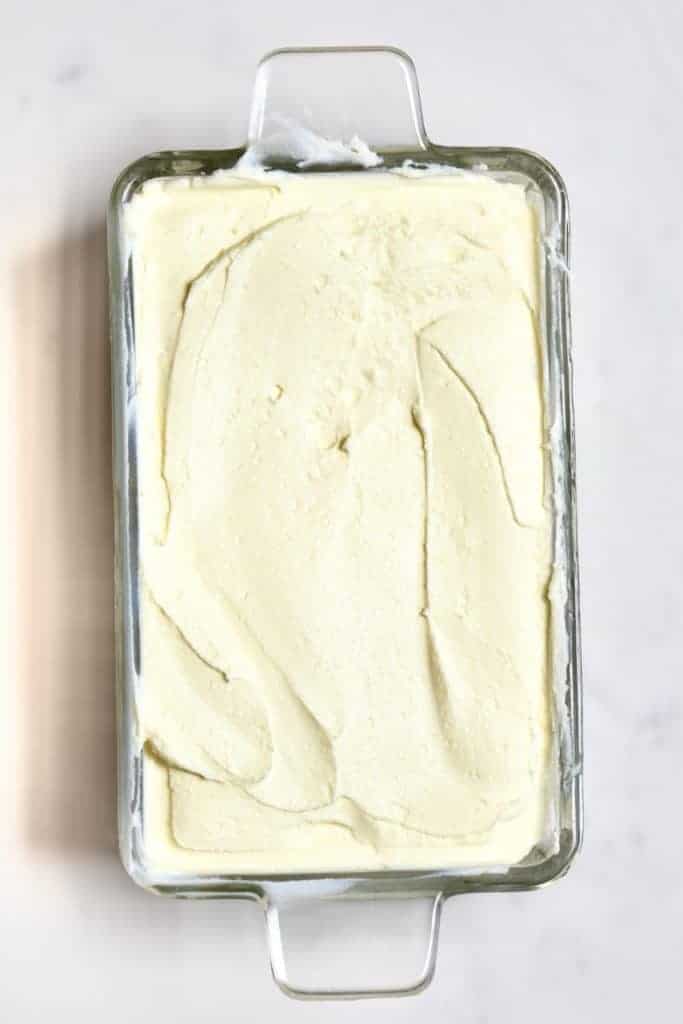
If I’d know how simple it was to make DIY cream cheese, I would have been making it months (if not years!) ago. Somehow I’ve managed to go through DIY’s for DIY Homemade Ricotta Cheese and DIY: Homemade Herb Butter (Compound butter) without trying this simple cream cheese method, which is actually a bit of in-between method of both of them.
In fact, I’m still being surprised at just how many ingredients you can make/get from a single dairy product. Cream cheese, cheese, butter, buttermilk, whey and more.
Smooth and creamy soft cheese only requires three ingredients, that you probably already have; Whole Milk, Lemon Juice and Salt. It can also be customised in any way you’d like – with herbs, pepper, sweet chilli, etc or used for a variety of sweet or savoury purposes.
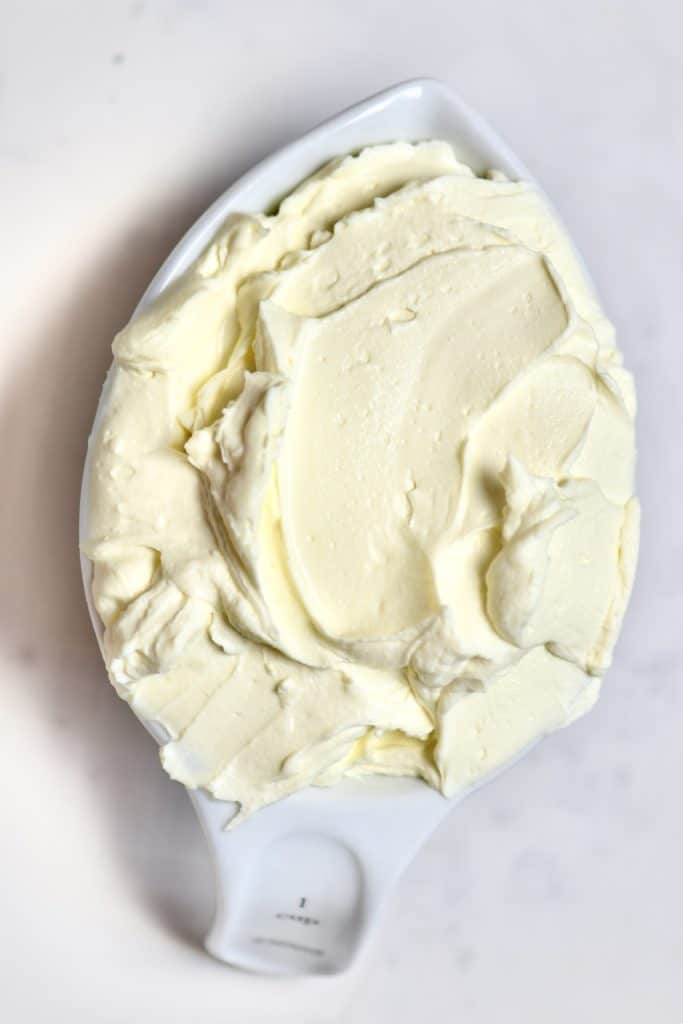
You are able to experiment with the milk used as well: Combining milk and cream in equal parts instead of just using milk, or even using heavy cream alone. Obviously the more cream you use, the richer and ‘creamier’ your final product. However, it would also up the fat levels.
I thought I’d keep things super simple for the first time trying homemade cream cheese and I loved it so much that I didn’t feel the need to complicate or change the recipe in any way.
I have seen recipes for cream cheese using liquid rennet, a cheese culture/starter and more potentially confusing and unobtainable ingredients and that is definitely not ‘my jam’. This is a recipe anyone can do and then can go crazy experimenting with, if desired.
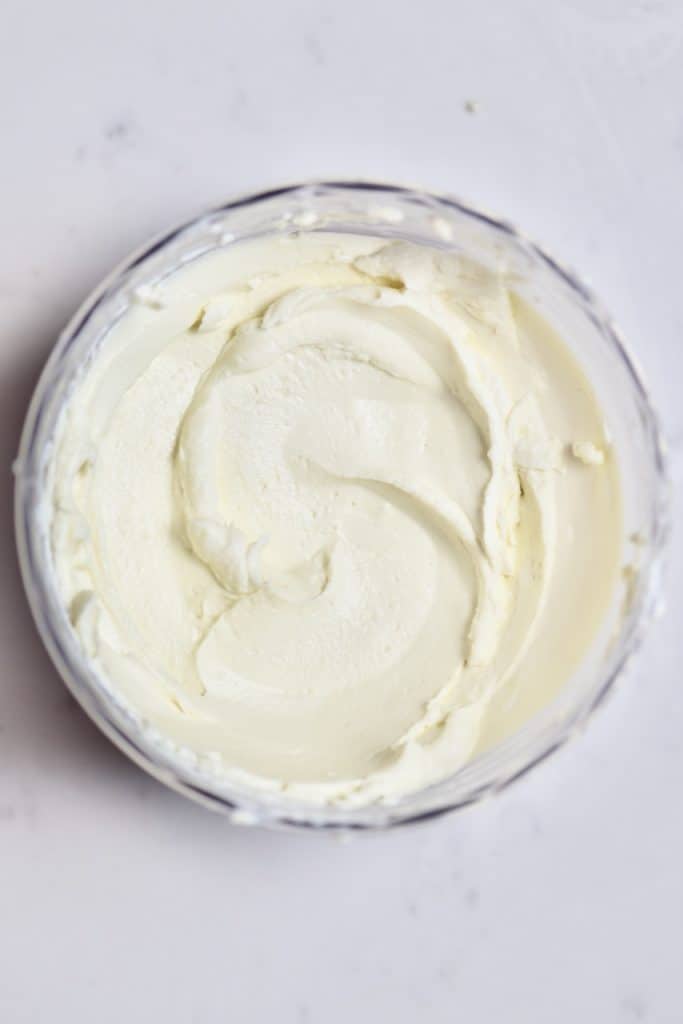
Want to save this recipe?
Why make your own cream cheese?
I know that’s probably a question that some of you are asking, and I actually have the perfect answer. Because homemade cream cheese is SO much better – and I’m not just saying that.
I’m not just talking about taste and texture either. Now, obviously I haven’t tried EVERY cream cheese out there – but last time I was at the store I decided to have a look at the ingredients list of some of the biggest brands of cream cheese here in the UK.
What I found was ‘E’ ingredients, gums and thickeners including the controversial carrageenan! Homemade cream cheese simply uses lemon juice, milk and salt and is still wonderfully smooth and creamy.
As I said above, the method for making cream cheese is actually very similar to making ricotta; Heat your milk, add a coagulant, leave to curdle, drain and blend!
Okay, there’s a little more to it than that, but you get the gist.
The ingredients
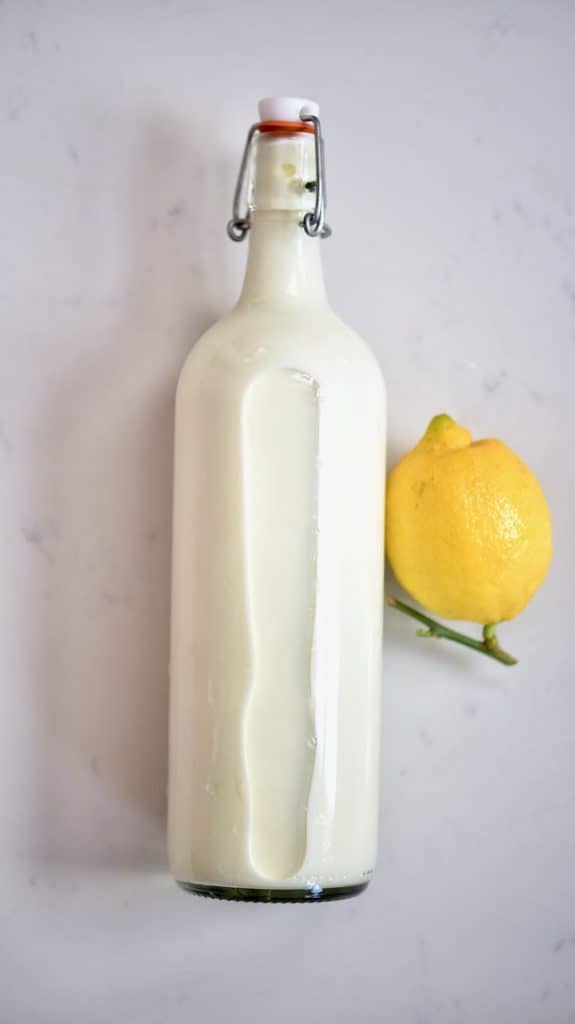
- full-fat milk – it’s important to use full-fat milk because of its fat content.
- lemon
- salt
- optional add-ons – dried herbs, garlic powder, dried chillies
Note* You could alternatively use half whole milk and half heavy cream OR completely use whole cream for soft cheese that is richer/creamier (but with a higher fat content)
You will also need a cheesecloth or a fine-mesh sieve
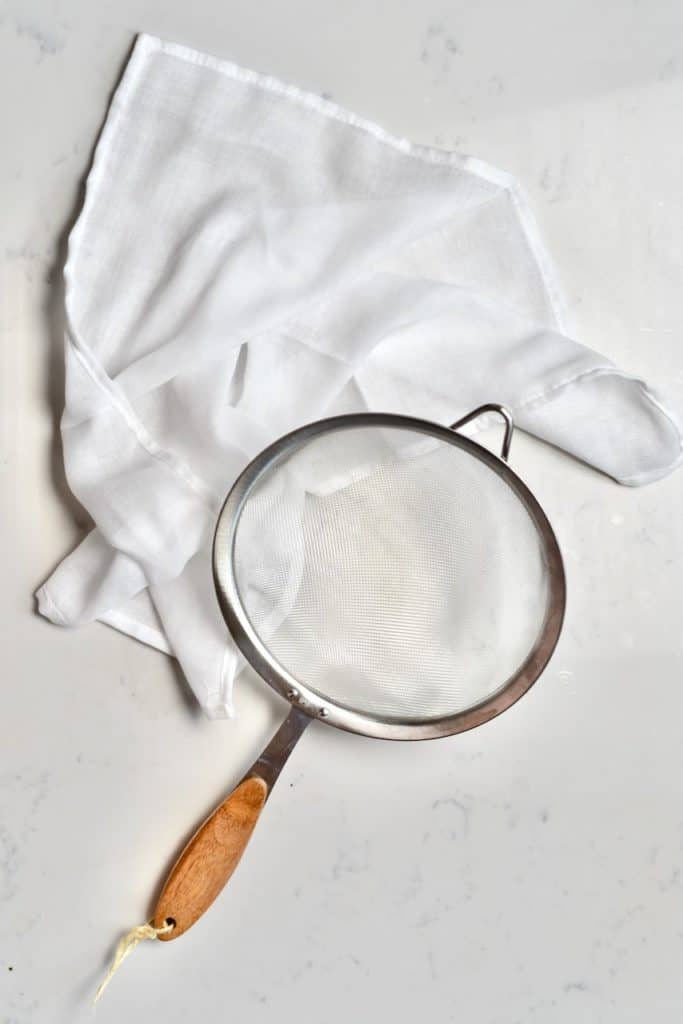
How to make cream cheese
Begin by pouring the milk in a saucepan. Heat the milk and bring it to boil over medium-high heat.
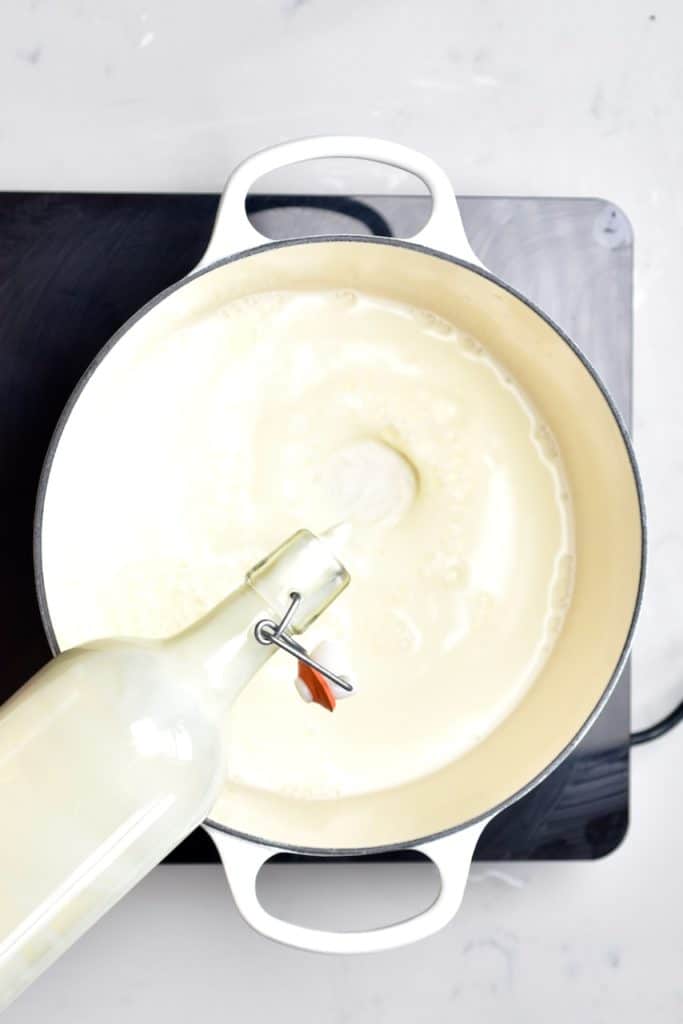
As soon as it boils, add the lemon juice and then turn off the heat.
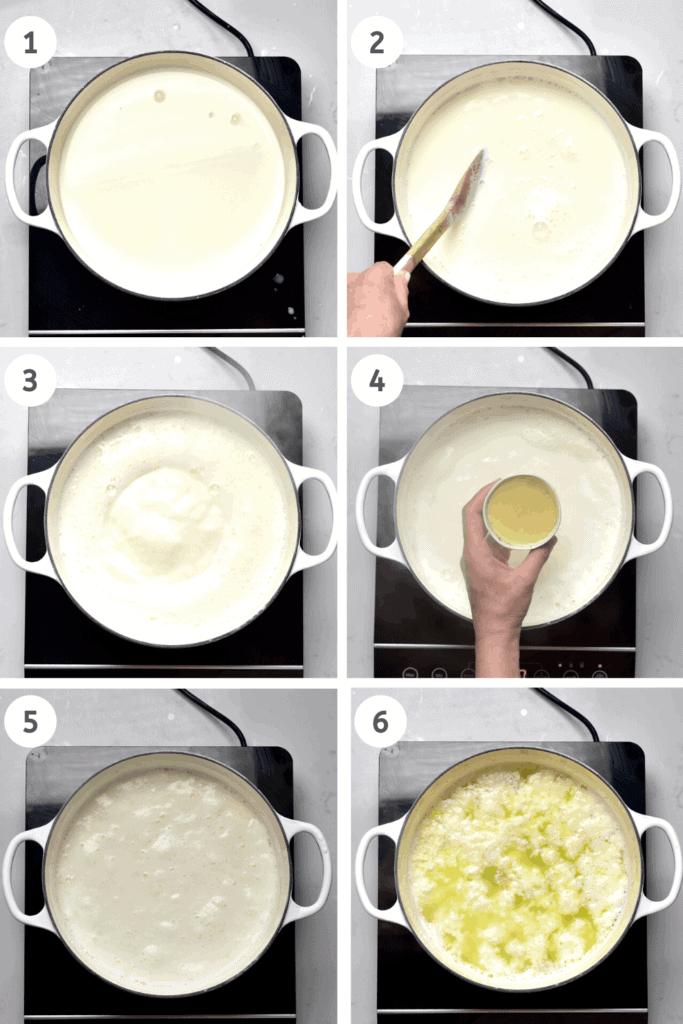
Set aside for a few minutes while the milk curdles. You’ll notice curds forming and a yellow-ish liquid being left behind.

Within a few minutes, all of your curds should have formed. Pour the curdled milk through a cheesecloth and a sieve to strain all the liquid whey.
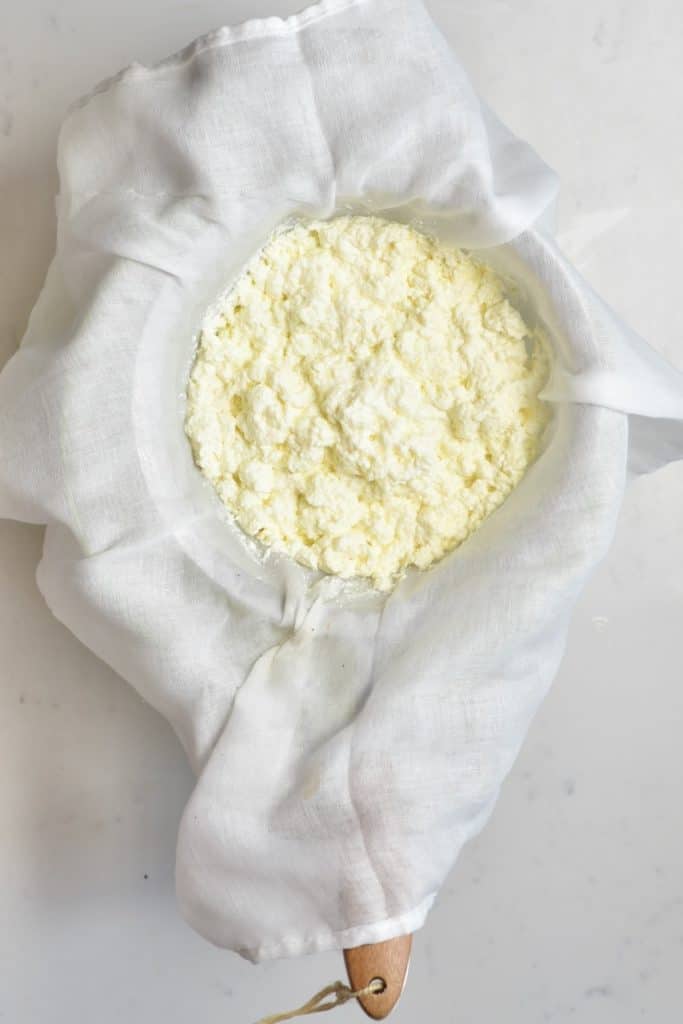
Alternatively, you can use a slotted spoon to scoop out all the curdles, while leaving the liquid whey in the pot.
Note* This leftover whey can then be used in a variety of ways. I’ve talked about this more in my DIY How To Make Paneer At Home post.
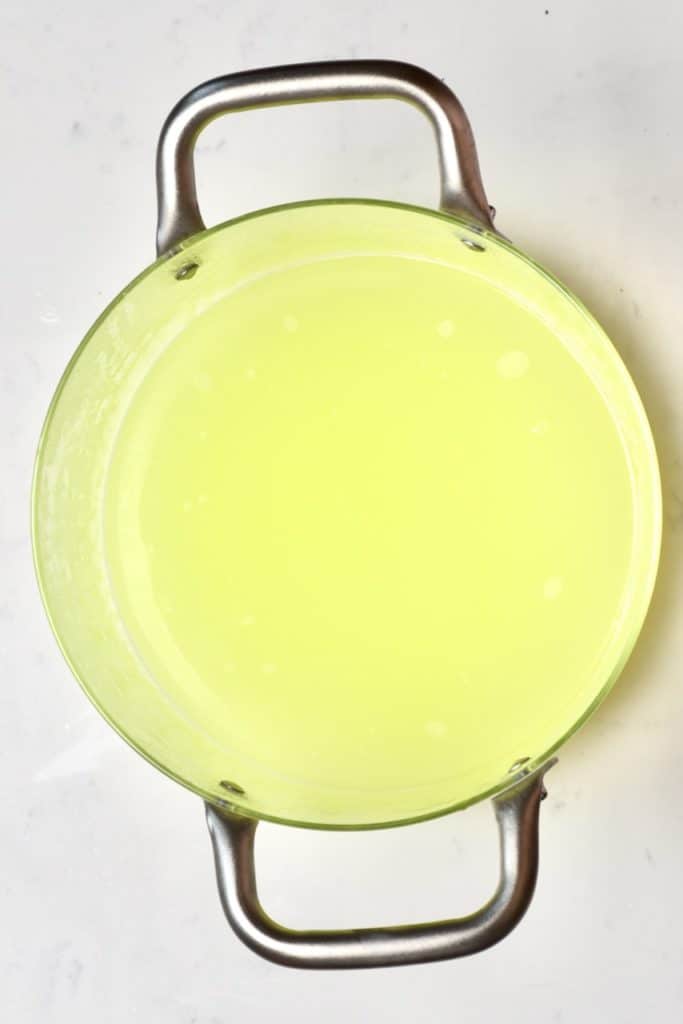
Rinse the curdled milk with cold water by pouring the water over the sieve. This will help to get rid of any extra whey, clinging to the curds.
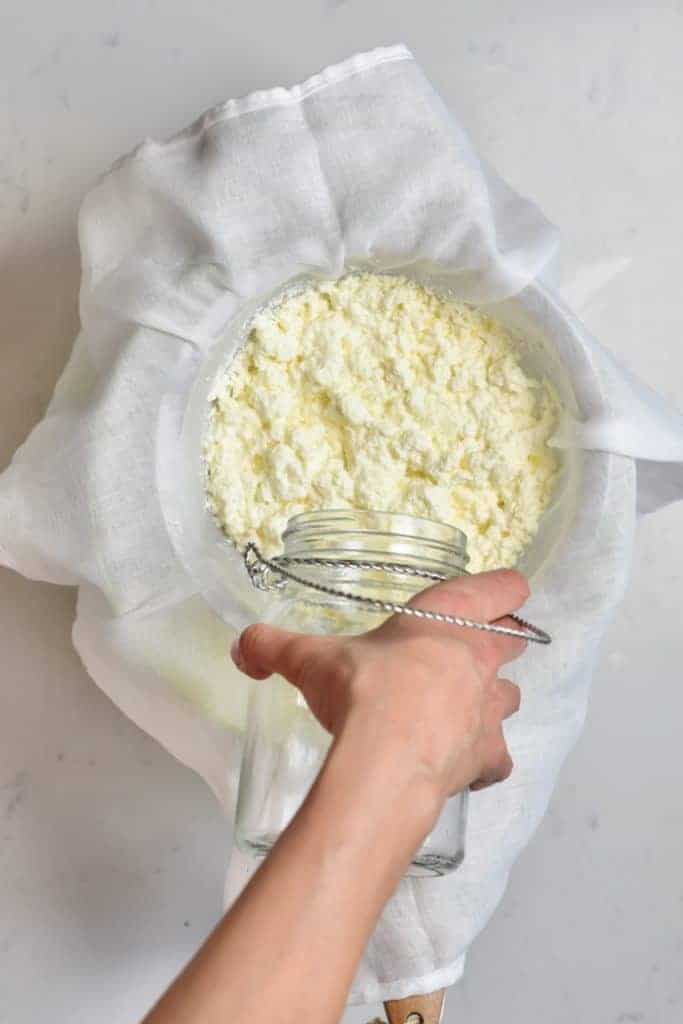
Squeeze the curdled milk as much as possible to drain any last drop of the liquid whey.
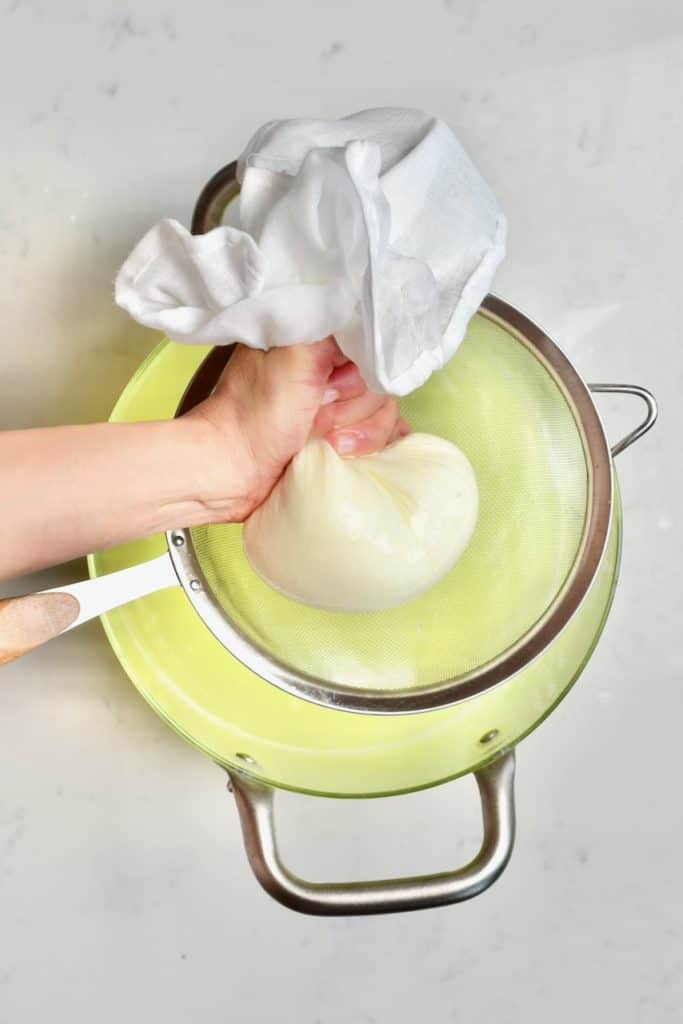
Put the strained milk into a food processor/blender and add the salt.
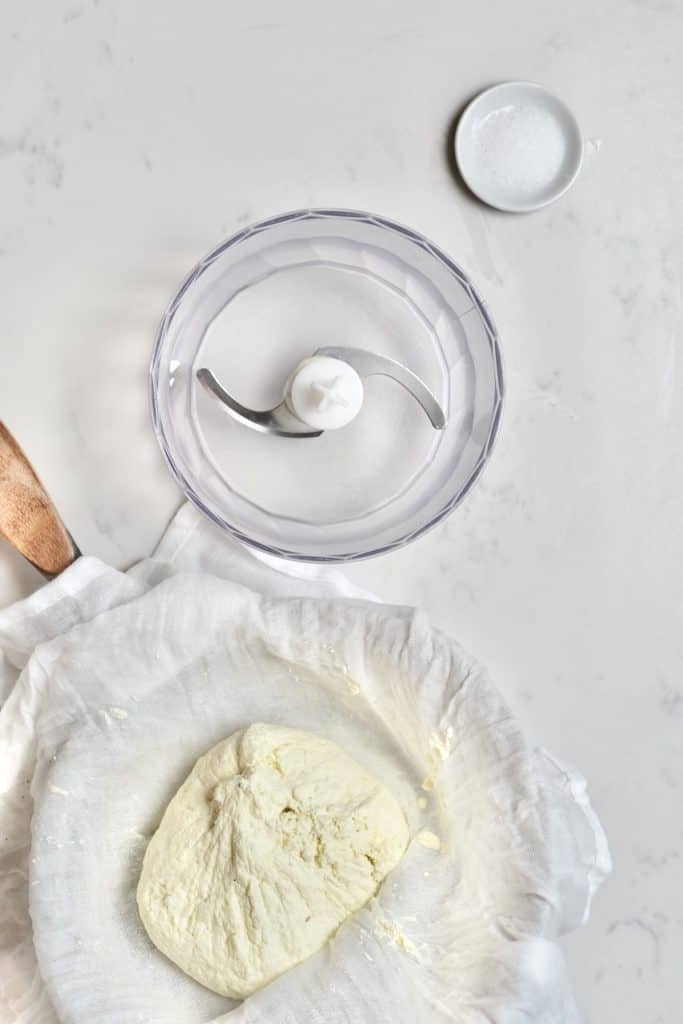
Within 1-2 minutes (this may vary, depending on how powerful your machine is) you’ll have a light and fluffy cream cheese.
If you want to add any additional herbs/flavourings, then do that now too. Be warned though as certain additional ingredients will affect the shelf-life of the cheese. I like dried herbs and garlic powder as natural flavourings that don’t affect the shelf life too much.
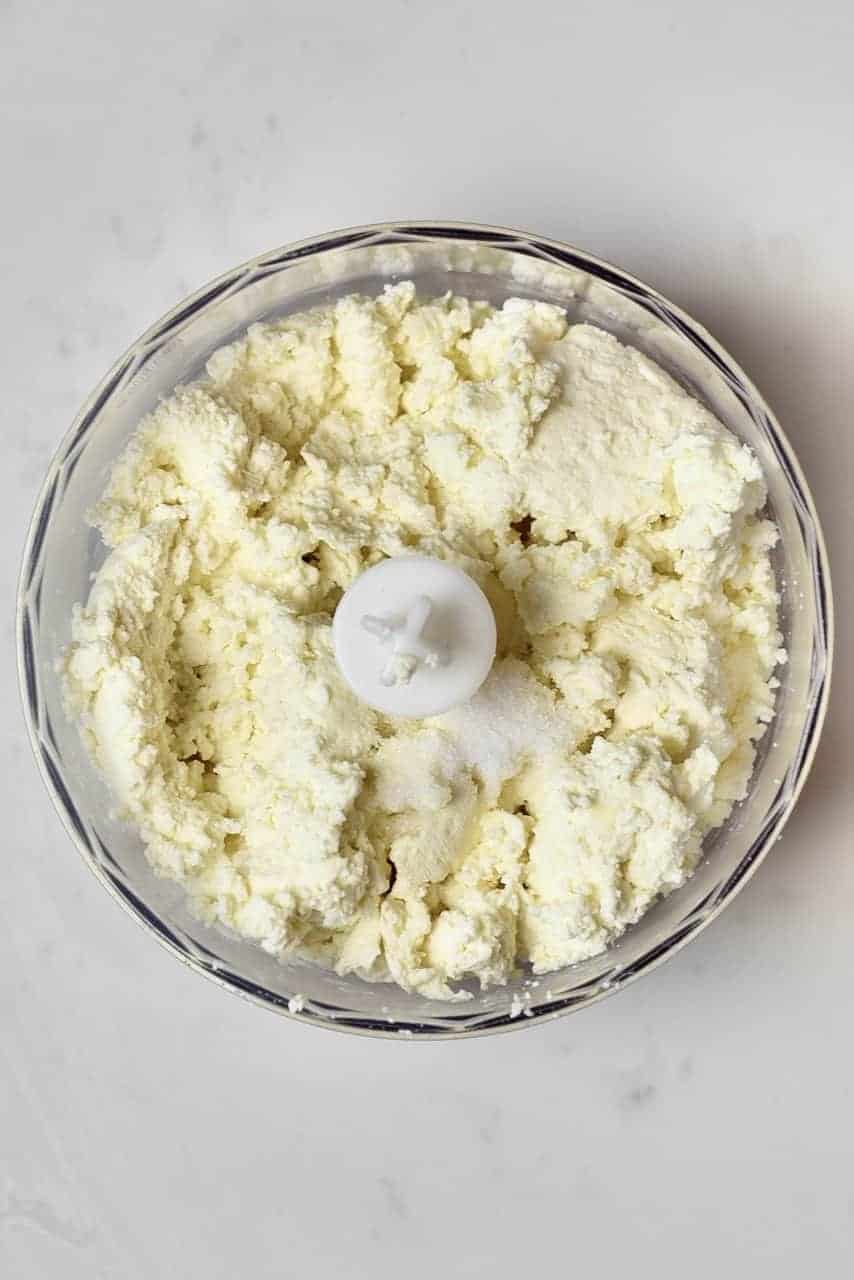
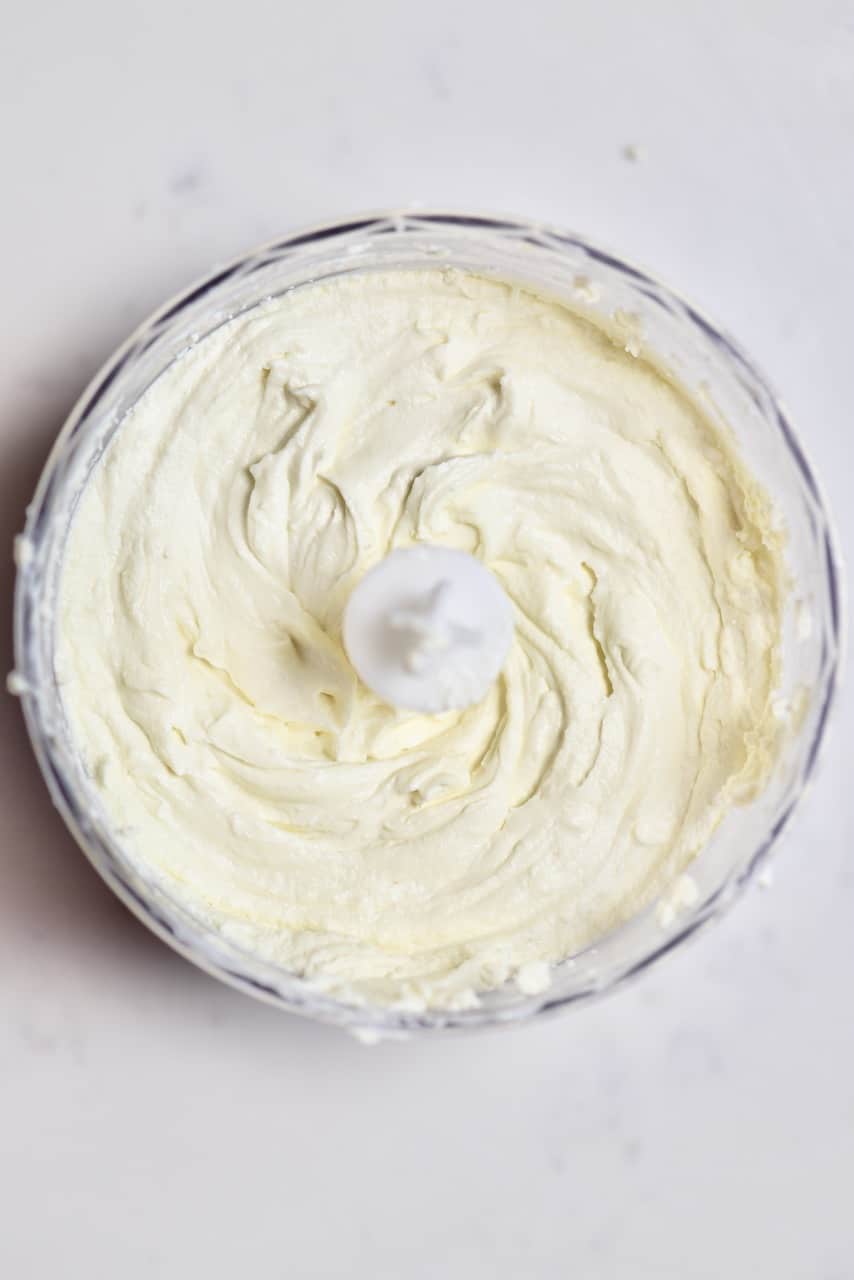
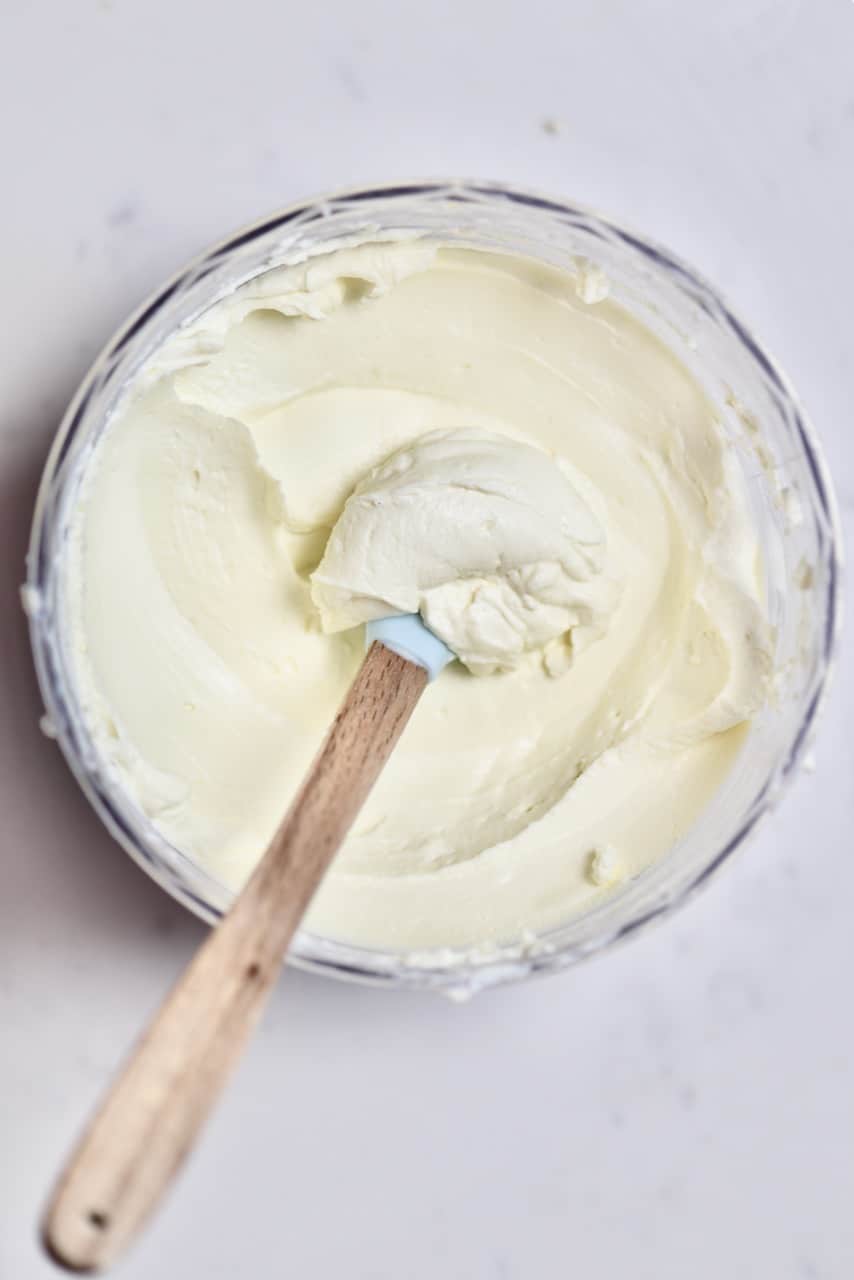
Store the cream cheese in an air-tight container in the fridge for up to 7 days. You can freeze cream cheese, but the texture upon thawing is more crumbly and is best used when you’re cooking it into something like a dip or sauce.
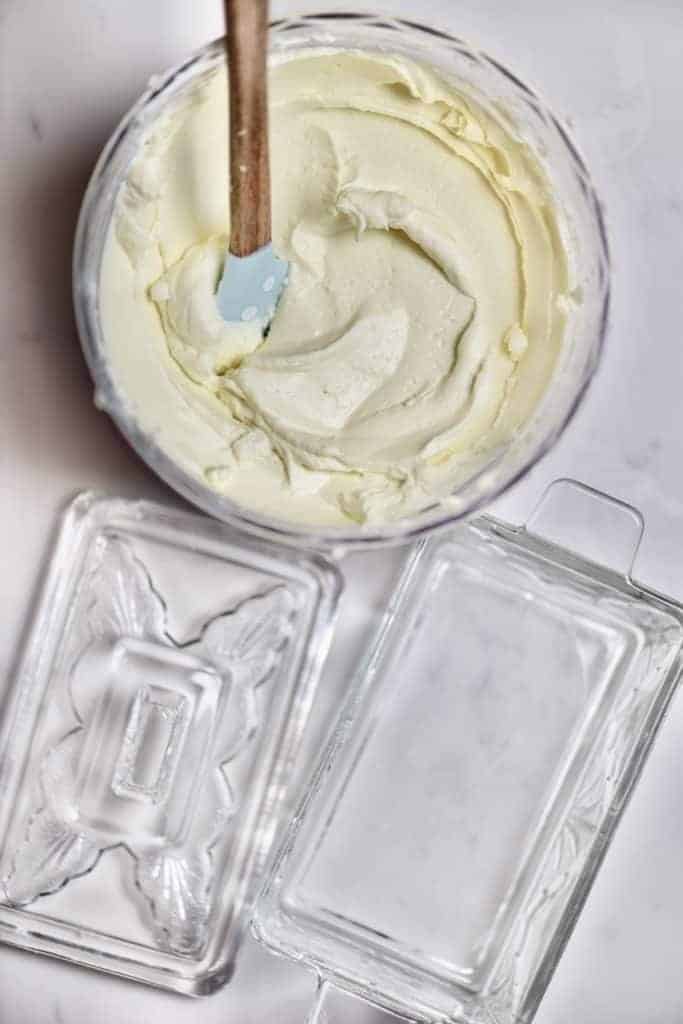
How to eat it?
Once your cheese is ready, then it can be used the same way you would with the store-bought version:
- Spread over a bagel, toast or sandwich
- Added to pasta and other sauces for a delicious creamy twist.
- Blended into a delicious cream cheese frosting (like for this gluten-free banana bread or a carrot cake) or for a cheesecake
- It’s delicious when added to soups and dips, too – like this Moutabal Aubergine Dip
- Spread in pastries.
- As a filling or topping for french toast and pancakes (served along with a berry compote)
And a bazillion (the technical term, of course) other ways.
Other DIY recipes You May Be Interested In:
If it’s DIY’s you’re looking for, then it’s DIY’s you’ve found. I’ve practically got them coming out of my ears. Here is a list of other dairy-based DIYs you may like though.
- DIY Homemade Ricotta Cheese
- DIY How To Make Paneer At Home
- DIY: Homemade Herb Butter ( Compound butter)
- HOW-TO: DIY HOMEMADE NATURAL YOGURT
Vegan Options:
If you’re dairy-free or vegan (or just curious), then you might like these DIYs instead.
- Simple Homemade Vegan Cashew Cheese
- Smoky Vegan Cheddar Cheese
- Herby Vegan Feta Cheese
- Easy Stretchy Vegan Mozzarella Cheese
- How To Make Tofu at Home • Two Simple Methods

Super Easy Homemade Cream Cheese (With Video)
Equipment
Ingredients
- 8 cups whole milk (full-bat) best raw or pasteurized, not UHT
- 5 Tbsp lemon juice or 1 large lemon, or white vinegar
- 1/2 tsp salt or more to taste (optional)
This yield about 1 cup of cream cheese.
Instructions
- Pour the milk into a saucepan. Heat and bring it to a gentle simmer over medium-high heat for 1-2 minutes. Don't let the milk come to a full boil.
- Add the lemon juice. Stir with a wooden spoon to incorporate, and then turn off the heat.
- Set aside for a few minutes while the milk curdles. Curds will form, and the whey (a yellowish liquid) will separate.
- Pour the curdled milk through cheesecloth and a sieve to strain out all the liquid whey. Or use a slotted spoon to scoop out all the curdles while leaving the liquid whey in the pot.
- Rinse the curds with cold water.
- Squeeze the curdled milk as much as possible to drain any last drop of the liquid whey (you can reserve the liquid – see the Notes below).
- Place the strained curdles into a food processor or blender and add the salt. Blend until light and fluffy.If you want it to be more creamy, gradually add 1-2 Tbsp of whey blend until it reaches your desired consistency.Add any optional add-ins now and blend or stir to incorporate them.
- The homemade cream cheese is now ready to enjoy, or you can store it in an airtight container in the fridge for up to 7 days or in the freezer for up to 2 months.
Video
Notes
Nutrition
Nutrition information is automatically calculated, so should only be used as an approximation.


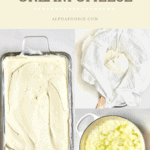
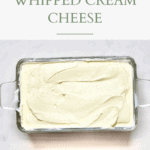
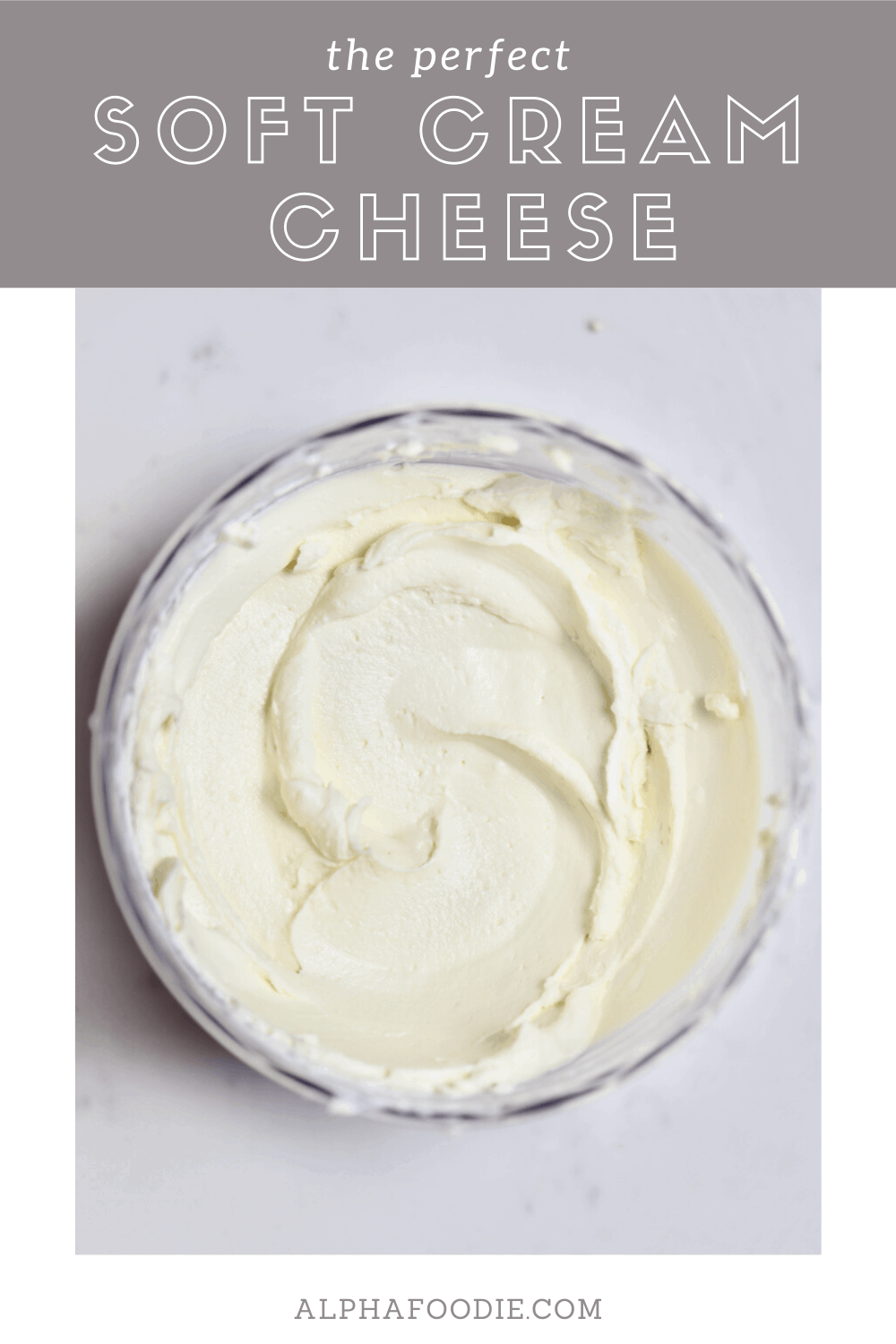









For the life of me I can’t get this to not be grainy when I make it. I’m using raw milk from our cow, I skim some cream off the top before making the cheese. Is too little cream my issue or maybe I’m not getting enough of the whey out? Help!
Hi Regan,
To get it smooth, you can blend the rinsed curds. Just add everthing to a blender or food processor and blend until light and fluffy. I hope this helps.
Your recipe is so spread out it would take 60 pages to print it. PleASE FIx this.
Hi Mike,
You can use the option “Print Recipe” on the recipe card. This prints 1 to 2 pages max. I hope this helps.
Where has this been all my life?
I hope you gave the recipe a try 🙂 Let me know how you liked it!
Hi! Will this work for 1% milk?
Hi Rachel,
If you use fat-free or low-fat milk, the milk might not curdle at all and you won’t obtain cream cheese. It’s better to use full-fat milk. I hope you give it a try.
How to watch video
Hi Gary,
There is a video in the recipe card. Unfortunately, if you are using an ad blocker, the video doesn’t display. You can check my social channels as well, where I share many videos including this one. I hope this helps.
I love how easy it was to follow. I did scorch the bottom of my pan… but it was fine.
There is no way to make this without a food processor. Fortunately my son gave me one for Christmas
It does tastes a little milky… so adding in garlic and onion may be helpful until I’m use to it.
Thank you
Thank you so much for your comment, Gina! So happy you gave this recipe a try!